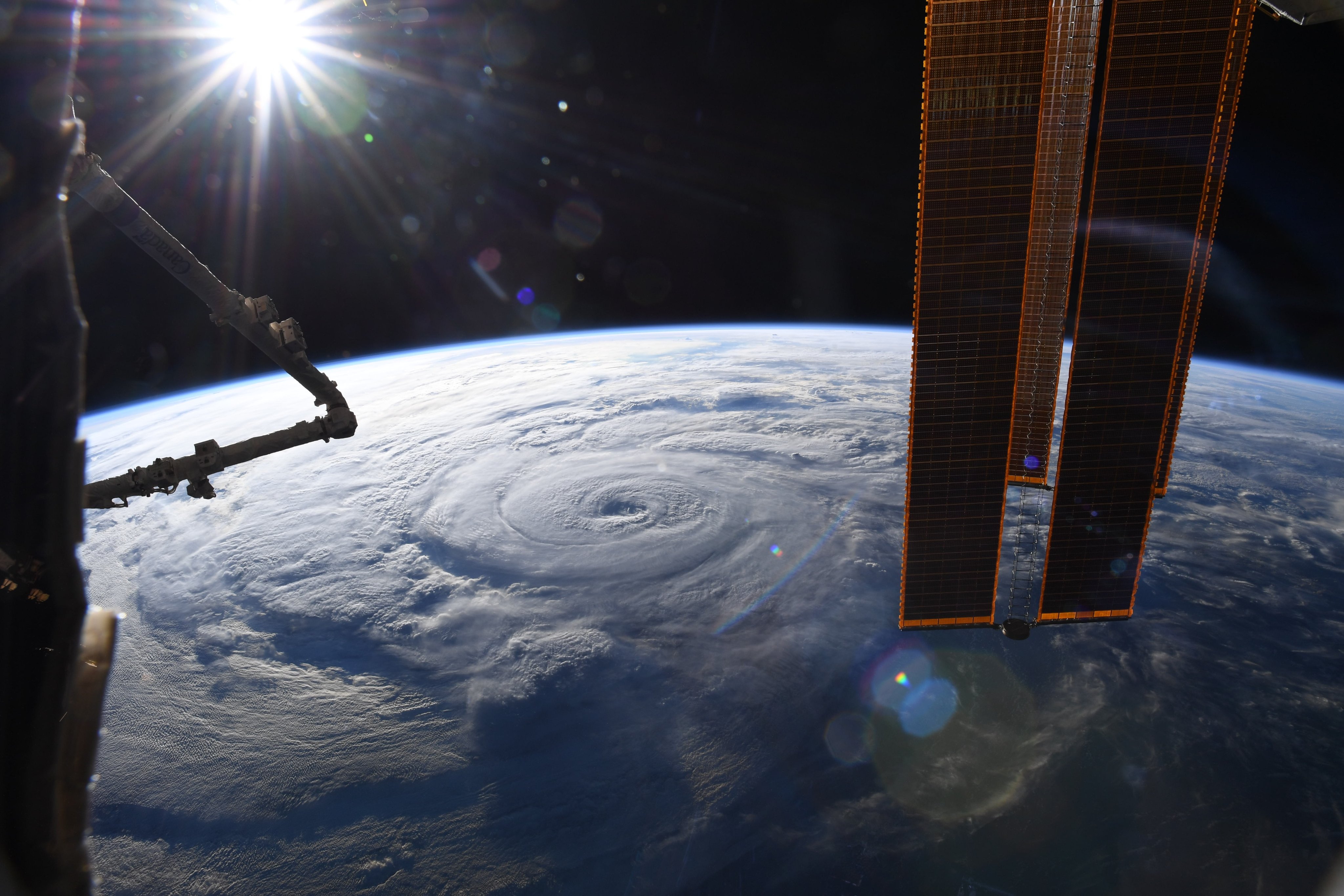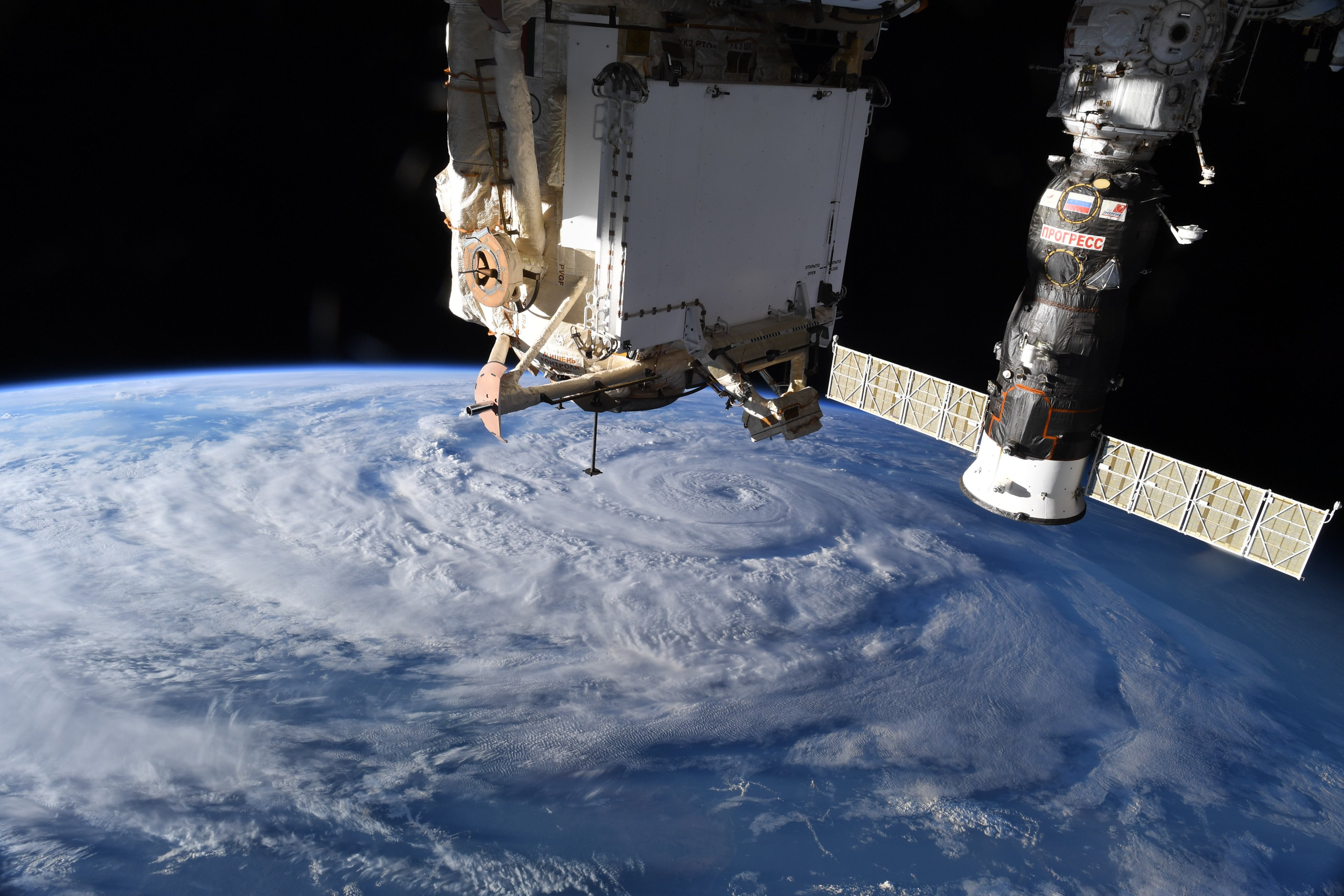Astronaut snaps amazing views of Hurricane Genevieve (now a tropical storm) from space
As Hurricane Genevieve bore down on Mexico's Baja coast Thursday (Aug. 20) and made its way towards California, astronauts and satellites monitored the formerly Category 4 storm from space.
Genevieve has now weakened to a tropical storm, according to the National Hurricane Center (NHC), but still has the potential for substantial damage.
"Continued heavy rainfall from Genevieve may lead to life-threatening flash flooding and mudslides across portions of far southern Baja California Sur through today," the NHC warned in an update Thursday morning. "Large [ocean] swells generated by Genevieve will affect portions of the west-central coast of Mexico and the coast of the southern Baja California peninsula through Friday."
Video: Hurricane Genevieve seen by satellite and space station
Related: How Earth-orbiting satellites are tracking the 2020 hurricane season



The storm's power is also highly visible from space. On Twitter, NASA astronaut Chris Cassidy sent three pictures Wednesday (Aug. 19) from the International Space Station showing the eye and the overall size of Genevieve, beneath the robotic Canadarm2, the station's solar panels and a Soyuz spacecraft. Cassidy's only comment on the storm, which stretches over most of the visible Earth in each photo, was including the hashtag #HurricaneGenevieve.
Two satellites also ferried images of the hurricane to Earth. The GOES-16 satellite — also known as GOES-East in reference to its geostationary position above Earth — obtained a dramatic video on Wednesday, while sustained wind speeds reached a maximum of 115 mph (185 km/h).
For our #ImageOfTheDay, @NOAA's #GOESEast used its hi-res visible band to view #HurricaneGenevieve's eye. As of Wednesday p.m., #Genevieve had a maximum sustained wind speed of 115 miles per hour. More: https://t.co/vCPKN24LBq pic.twitter.com/hUCYSGv0i0August 19, 2020
The imagery posted to Twitter shows high-definition visible imagery from the eye of Genevieve, with swirling clouds at the center rippling waves further out from the eye. GOES-16 is a co-operative program managed by the National Oceanic and Atmospheric Administration (NOAA) and NASA.
Breaking space news, the latest updates on rocket launches, skywatching events and more!
NOAA's Suomi NPP satellite also watched the hurricane in infrared wavelengths to give more information about the storm's strength, structure and size, NASA said in a statement. The agency shared a nighttime image of Genevieve based on data from Suomi's Visible Infrared Imaging Radiometer Suite (VIIRS) instrument.
"The hurricane's eye was still visible and well defined," NASA said of the image, which was created using data from the NASA Worldview application. "[The eye] was surrounded by powerful thunderstorms, although deep convection is generally lacking over the southwestern portion of the circulation."
Hurricane and tropical storm warnings remain in place in the Baja region, according to data from the National Hurricane Center.
Follow Elizabeth Howell on Twitter @howellspace. Follow us on Twitter @Spacedotcom and on Facebook.

Elizabeth Howell (she/her), Ph.D., was a staff writer in the spaceflight channel between 2022 and 2024 specializing in Canadian space news. She was contributing writer for Space.com for 10 years from 2012 to 2024. Elizabeth's reporting includes multiple exclusives with the White House, leading world coverage about a lost-and-found space tomato on the International Space Station, witnessing five human spaceflight launches on two continents, flying parabolic, working inside a spacesuit, and participating in a simulated Mars mission. Her latest book, "Why Am I Taller?" (ECW Press, 2022) is co-written with astronaut Dave Williams.

